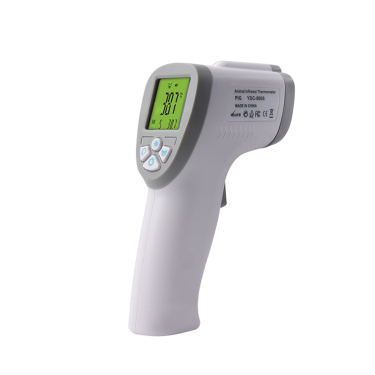
# Dog Thermometer: Essential Tool for Monitoring Your Pet’s Health
## Why Every Pet Owner Needs a Dog Thermometer
As a responsible pet owner, monitoring your dog’s health should be a top priority. One of the most crucial tools in your pet care arsenal is a reliable dog thermometer. Unlike human thermometers, these specialized devices are designed specifically for canine use, providing accurate readings that can help you detect potential health issues early.
A dog’s normal body temperature ranges between 101°F and 102.5°F (38.3°C to 39.2°C), which is slightly higher than humans. When their temperature rises above 103°F (39.4°C) or falls below 99°F (37.2°C), it could indicate serious health problems that require immediate veterinary attention.
Keyword: dog thermometer
## Types of Dog Thermometers Available
### 1. Rectal Digital Thermometers
The most accurate method for measuring a dog’s temperature is through rectal measurement. Digital rectal thermometers designed for pets provide quick readings (usually within 10-30 seconds) and are considered the gold standard for at-home temperature monitoring.
### 2. Ear Thermometers
Infrared ear thermometers offer a less invasive alternative to rectal measurement. These devices measure the infrared heat waves emitted from the eardrum area. While convenient, they may be slightly less accurate than rectal thermometers, especially if not positioned correctly.
### 3. Non-Contact Thermometers
The newest innovation in pet thermometers, these devices measure temperature without physical contact by scanning infrared radiation from the dog’s body. They’re quick and stress-free but may not be as precise as other methods.
## How to Properly Use a Dog Thermometer
Using a dog thermometer correctly is essential for obtaining accurate readings:
– For rectal thermometers: Lubricate the tip with petroleum jelly or water-based lubricant
– Gently lift your dog’s tail and insert the thermometer about 1 inch into the rectum
– Hold it steady until it beeps (for digital models) or for about 2 minutes (for mercury thermometers)
– Clean the thermometer thoroughly after each use with alcohol wipes
– Reward your dog with treats to create positive associations
## When to Check Your Dog’s Temperature
Regular temperature checks aren’t necessary for healthy dogs, but you should monitor your pet’s temperature when you notice:
– Lethargy or unusual behavior
– Loss of appetite
– Shivering or panting excessively
– Vomiting or diarrhea
– Before and after vaccinations
– During recovery from illness or surgery
## Choosing the Right Dog Thermometer
When selecting a dog thermometer, consider these factors:
– Accuracy: Look for clinical-grade accuracy (±0.2°F)
– Speed: Faster readings reduce stress for your pet
– Durability: Choose waterproof models for easy cleaning
– Safety: Non-toxic materials and rounded tips
– Ease of use: Clear displays and simple operation
– Memory function: Helpful for tracking temperature trends
Remember that while a dog thermometer is an invaluable tool for monitoring your pet’s health, it doesn’t replace professional veterinary care. Always consult your veterinarian if you’re concerned about your dog’s temperature or overall health.